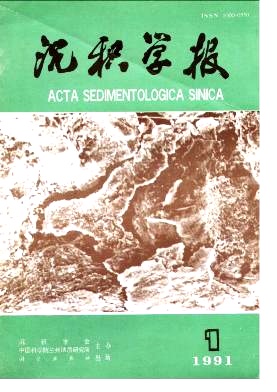HTML
| [1] | 1. Allen J.R.L., 1964, Studies in fluviatile sedimentation: Siz cyclothems from the Lower old Red Sand-stone, Anglo-Welsh Basin.Sedimentology, V.3, p.163-198. 2. Boothroyd J.C and Nummedal D., 1978, }Proglacial braided outwash: a model for humid alluvial fan deposits.In: Miall A.D (ed),Fluvial Sedimentology, Can.Soc.PetroLGeol.Mem.S, p.641-X68. 3. Cant D.J, 1978, Development of a facies model for sandy braided river sedimentation: comparision of the South Saskatchewan River and the Battery Point Formation. In: Miall, A. D(ed),Fluvial Sedimentology, Cafl.Soc.PetroLGeol.Mem.S, p.627-639. 4. Collinson J. D.,1986, Alluvial sediments.In: Reaeing H.G (ed),Sedimentary Environments and Facies, Blackwell ScientiFc Publications, p.20-62. 5. Friedman G. M and Sanders J. E, 1978, Principles of Sedimentology, John Wiley & Sons, New Yord, Chichester, Brisbane, Toronto. 6. Friend P.F, 1978, Distinctive features of some ancient river systetns.In: Miall A.D (ed),Fluvial Sedimentology, Can.Soc.Petrol.Geol.Mem.S, p.531-542. 7. Heward A. P, 1978. Alluvial fan sequence and megasequence models, with examples from Westphalian D Stephanian B Coalfields. northern Spain.In: Miall A.D (ed),Fluvial SedimentoloEy. Can Snc. PetrnlC'*enl Mem.5, P.669-702 8. Johnson S.Y. 1987, Sedimentology and paleogeographic significance of six fluvial sandstone bodies in the Maroon Formation, Eagle Basin. Northwest Colorado. U.S.Geol.Surv.Bu11.I787-A-C, p.1-18. 9. Leopold L. B, and Wolman M, G, 1957, River channel patterns: braided, meandering and straight.U.S.Geol.Surv.Profess.Papers 282-B, p.39-85. 10. Leopold L.B et 01.1964, Fluvial Process in Geomorphology, Freeman: San Francisco, London. 11. Miall A. D, 1985, Architectural-element analysis: a new method of facies analysis applied to fluvial deposits.Earth Sciance Reviews, p.261-308. 12. Miall A.D, 1985,柯保嘉译,1986,一种新的河流沉积分析法—结构要素分析法,《国外地质》,第3期,1-6页。 13. Middleton G. V. 1965. Primary Sedimentary Structures and Their Hydrodynamic Interpretation. Spec.Publ.Econ.Paleont.Miner.12, Tulsa. 14. Reineck H. E, et al.,1980. Depositional Sedimentary Environments: with Reference to Terrigenous Clastics, Springer-Verlag, Berlin, Heidelberg, New York 15. Rust B. R, 1978a, Depositional models for braided alluvium. In: Miall A. D(ed),Fluvial Sedimentology, Can.Soc.Petrol.Geol.Mem.S, p.605-525. 16. Rust B. R, 1978b, A classiFcation of alluvial channel systems. 1n: Miall A. D(ed),Fluvial Sedimentology, Can.Soc.Petrol.Geol.Mem.S, p.187-198. 17. Schumm S. A. 1968, Speculations concerning paleohydrologic conrtols of terrestrial sedimentation.Geol.Soc.Am.Bu11.79, p.1573-1588. 18. Smith D.G and Smith. N.D. 1980, Sedimentation in anastomosed river systems' Examples from al-luvial valleys near Banff. Alberta.Jour.Sedi.Petrol.V.50, p.157-164. 19. Smith D.G and Putnam. P. E, 1980. Anastomosed river deposits: Modern and anment examples in Alberta. Canada.Canadian Journal of Earth Sciences, V, 17, p. l 396-1406 20. Smith D. G. 1983. Anastomosed Ruvial deposits:Mdoern examples from Western Canada. In: collinson, J.D and Lewin. 1 leds),Modern and Ancient Fluvial Systems. Spec.Pub1.1AS 6.3.5, p.155-168 21. Sundborg A. 1956, The River Klxralven: A study of Fluvial Proccesses. Geograf. Ann. 38, p. 125-316 |






 DownLoad:
DownLoad: